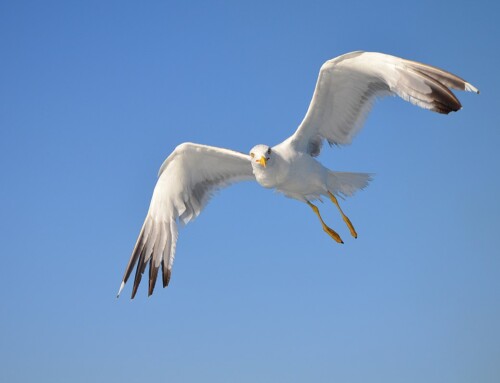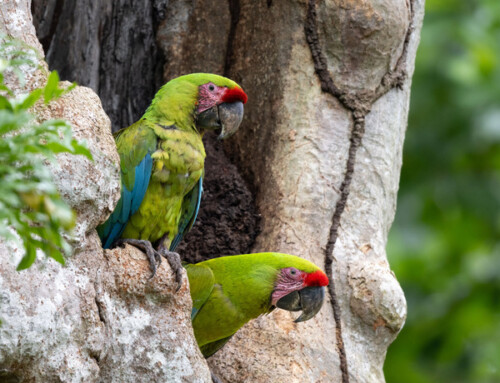Could nest-site selection explain the lack of a hybrid quail swarm?
LINKED PAPER
The role of nest-site selection and cereal production in differential nest predation in Common Quail Coturnix coturnix and hybrid quail C. coturnix x C. japonica. Capdevila,J., Puigcerver, M., López, S., Pérez-Masdeu, E., García-Galea, E. & Rodríguez-Teijeiro, J.D. 2016. IBIS DOI: 10.1111/ibi.12390. VIEW
The Common Quail Coturnix coturnix (Fig. 1) is a popular game bird in many Mediterranean countries (Spain, Greece, Italy and France). In Spain alone, around 1 300 000 individuals are hunted every year, and large farm reared quails have been restocked to increase hunting bags. As an example, in Catalonia (Northeast Spain), around 68 000 individuals were restocked yearly from 1990 to 2006, whereas the wild breeding population is estimated to be between 5 347 and 20 847 individuals (Rodríguez-Teijeiro et al. 2004).

One of the problems related to these restocking practices is that, although breeders claim that the quails used are Common Quail, they are hybrids between the Common Quail and the Japanese Quail Coturnix japonica (Barilani et al. 2005, Sánchez-Donoso et al. 2012); the term ‘hybrid’ here describes all individuals whose genomes show an admixture of the two lineages without limiting the definition to first-generation (F1) hybrids.
As experiments conducted in captivity and in the wild have shown that there are insufficient prezygotic and postzygotic barriers between the Common Quail and the Japanese Quail to prevent hybridization (Derégnaucourt et al. 2002, Derégnaucourt & Guyomarc’h 2003, Puigcerver et al. 2013), a rapid increase in the proportion of hybrids in wild Common Quail populations would be expected. In fact, introgression of domestic Japanese Quail alleles into the Common Quail gene pool has already occurred (Sánchez-Donoso et al. 2014), and could modify the migratory patterns of wild quail populations, leading them to a decrease.
Nevertheless, Puigcerver et al. (2007, 2012) failed to detect a rise in the proportion of hybrids in Quail populations in Catalonia from 1984 to 2011. This apparent lack of an increase in the proportion of hybrids in the wild could be explained by differences between Common Quail and hybrid quail in terms of adult survival, nest success and chick survival. In fact, female survival rates after release and nest survival are higher for Common Quail than for hybrid quail (Puigcerver et al. 2014).
In this study, we have explored nest-site selection characteristics in both female quail types (Common Quail and hybrids) to help gain insight into the nest predation differences observed. We have thus compared and analysed the nest predation of Common Quail and hybrid quail during the incubation period in relation to the distance of nests to cereal field margins and barley straw production in Catalonia (a good proxy of nests vegetation cover).
The study was carried out in a 1-Km2 area of Northeastern Spain (Querol, Tarragona Province), composed by 15 cereal plots of barley, during the period 1993-2010. We put 9-12 walk-in funnel traps with a smaller cage containing a female quail as bait; between 1993 and 2005, only female Common quails were used as bait, whereas in 1999 and from 2006 onwards, farm-reared female quails were also used. These traps were examined every 2-3 days, and when a free-ranging male entered a funnel trap, we attached backpack radio-transmitters to both individuals and released them. Released individuals were monitored 3 days a week with a telemetry receiver and a three-element Yagi antenna to locate them and check if they had mated and nested, following Rodríguez-Teijeiro et al. (2003). In 2006 and in 2009, no female Common Quail were monitored.
A total of 77 radiotagged Common Quail females (74.8%) and 26 hybrid quails (25.2%) nested in the study area, most of them inside cereal fields, but some of them outside, in natural herbaceous cover. We determined the minimum distance of each nest to the nearest cereal field margin using a telemeter, and we considered a nest to have been predated if one or more eggs had been damaged, consumed or removed from the nest.
Nest predation accounted for 15.5% of the nests, and results clearly showed a higher nest predation for hybrid females: in the case of the Common Quail, 11.7% of the nests were predated, but no female was predated on the nest, whereas in the hybrid quail this percentage was 26.9% and, in 42.9% of cases, female hybrids were predated on the nest. A Generalised Linear Model (GLM) showed that the type of female had a significant effect on nest predation (χ21=5.58, P=0.02), thus confirming that hybrid female quail nests have a greater predation probability (0.31, 95% CI 0.12-0.59) than those of Common Quail females, in which the probability was nil; this result could explain the absence of a hybrid swarm in wild Common Quail populations.
In the same model, barley straw production in Catalonia had a significant and inversely proportional effect on Common Quail nest predation (χ21=7.57, P<0.01), but nest distance to cereal margin had no significant effect. This result shows that, during the years in which barley straw production was above average, nest predation was nil, whereas during the years in which it was below average, nest predation was higher (Fig. 2). On the other hand, none of the factors included in the model had a significant effect on hybrid quail nest predation, strongly suggesting that nest predation probability of hybrid quail was independent of nest cover; however, we must point out that in the longer dataset used for analysing data on Common Quail, straw production shows a much greater range of variation than that of the hybrid Quail dataset (Fig. 3). As a consequence, we don’t know whether hybrid quail nest predation could be significantly affected by greater variation in barley straw production.


With regard to the placement of Common Quail and hybrid quail nests, a GLM showed that the type of female had no significant effect on the number of nests per ha and year (χ21= 0.40, P=0.53); however, there was a significant effect of nest placement, showing that both types of female prefer nesting near field margins, either among the cereal or in natural herbaceous surfaces (Fig. 4). As both types of female showed the same tendency for placing nests close to cereal field margins, nest-site selection is not responsible of the higher nest predation suffered by hybrid female quails.

All in all, we advocate then for a less effective anti-predator behaviour of hybrids during the incubating period or a different smell between both types of female for explaining the higher nest predation of female hybrids.
References
Barilani, M., Derégnaucourt, S., Gallego, S., Galli, L., Mucci, N., Piombo, R., Puigcerver, M., Rimondi, S., Rodríguez-Teijeiro, J.D., Spanò, S. and Randi, E. (2005) Detecting hybridization in wild (Coturnix c. coturnix) and domesticated (Coturnix c. japonica) quail populations. Biol. Conserv. 126, 445-455. VIEW
Derégnaucourt, S., Guyomarc’h, J.C. and Aebischer, N.J. (2002) Hybridization between European quail Coturnix coturnix and Japanese quail Coturnix japonica. Ardea 90, 15-21.
Derégnaucourt, S. and Guyomarc’h, J.C. (2003) Mating call discrimination in female European (Coturnix c. coturnix) and Japanese quail (Coturnix c. japonica). Ethology 109, 107-119.
Puigcerver, M., Sanchez-Donoso, I., Vilà, C., Sardà-Palomera, F., Morales-Rodríguez, P.A., Caballero de la Calle, J.R. and Rodríguez-Teijeiro, J.D. (2013) Hibridación entre la codorniz común (Coturnix coturnix) y la codorniz de granja: estado de un problema de conservación. Ecosistemas 22, 48-53. VIEW
Puigcerver, M., Vinyoles, D. and Rodríguez-Teijeiro, J.D. (2007) Does restocking with Japanese quail or hybrids affect native populations of common quail Coturnix coturnix? Biol. Conserv. 136, 628-635. VIEW
Puigcerver, M., Sardà-Palomera, F. and Rodríguez-Teijeiro, J.D. (2012) Determining population trends and conservation status of the common quail (Coturnix coturnix) in Western Europe. Anim. Biodivers. Conserv. 35, 343-352. VIEW
Puigcerver, M., Sanchez-Donoso, I., Vilà, C., García-Galea, E. and Rodríguez-Teijeiro, J.D. (2014) Decreased fitness of restocked hybrid quails prevents fast admixture with wild common quails. Biol. Conserv. 171, 74-81. VIEW
Rodríguez-Teijeiro, J.D., Puigcerver, M., Gallego, S., Cordero, P.J. and Parkin, D.T. (2003) Pair bonding and multiple paternity in the polygamous common quail Coturnix coturnix. Ethology 302, 291-302. VIEW
Rodríguez-Teijeiro, J.D., Puigcerver, M. and Gallego, S. (2004) Guatlla Coturnix coturnix in: Brotons, L., Estrada, J., Herrando, S., Pedrocchi, V. Atlas dels Ocells Nidificants de Catalunya, 1999-2002. ICO/Lynx Edicions, Barcelona, pp. 112-113.
Sánchez-Donoso, I., Vilà, C., Puigcerver, M., Butkauskas, D., Caballero de la Calle, J.R., Morales-Rodríguez, P.A. and Rodríguez-Teijeiro, J.D. (2012) Are farm-reared quails from game restocking really common quails (Coturnix cotunix)?: A genetic approach. PLoS ONE 7, 1-8. VIEW
Sánchez-Donoso, I., Huisman, J., Echegaray, J., Puigcerver, M., Rodríguez-Teijeiro, J.D., Hailer, F. and Vilà, C. (2014) Detecting slow introgression of invasive alleles in an extensively restocked game bird. Front. Ecol. and Evol. Vol. 2 Article 15.
Image credit
Featured image: Common Quail Coturnix coturnix © Manel Puigcerver
If you want to write about your research in #theBOUblog, then please see here.





